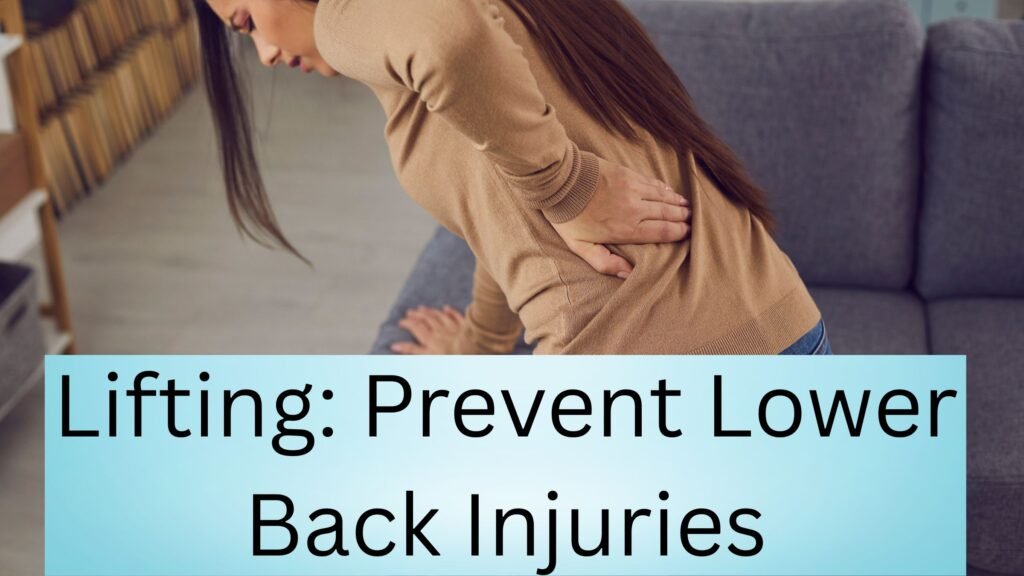Lower back injuries are among the most common issues people face when lifting objects incorrectly. Whether at work, in the gym, or during daily activities, improper lifting techniques can strain muscles, damage discs, and lead to chronic pain. Understanding the right methods and adopting safe habits can help prevent these injuries and keep your spine healthy.

Why Proper Lifting Matters
Your spine is designed to handle significant loads, but improper movements put unnecessary stress on your lower back. Poor lifting posture can lead to conditions such as herniated discs, muscle strains, and sciatica. Repeated stress on the lower back can also cause long-term degeneration, making everyday activities painful and difficult.
Common Causes of Lifting-Related Back Injuries
Many factors contribute to lower back injuries when lifting, including:
- Poor Posture: Rounding the back or twisting while lifting increases strain on the spine.
- Lifting with the Back Instead of the Legs: This shifts the load to the lumbar spine instead of utilizing the powerful leg muscles.
- Carrying Loads That Are Too Heavy: Exceeding your body’s capacity can overload the spinal structures.
- Sudden, Jerky Movements: Fast or uncontrolled movements can cause muscle tears or disc injuries.
- Fatigue and Weak Core Muscles: A weak core fails to provide adequate support to the spine during lifting.
Best Practices for Safe Lifting
1. Assess the Load Before Lifting
Before picking up an object, determine its weight. If it is too heavy, seek help or use a mechanical aid. Trying to lift an excessively heavy object alone is a common cause of lower back strain.
2. Use a Wide Stance for Stability
Keep your feet shoulder-width apart to create a stable base. This helps distribute weight evenly and reduces the risk of losing balance.
3. Bend at the Hips and Knees
Always lower yourself by bending at the hips and knees, not the back. Squatting positions your legs to handle the majority of the load rather than stressing your spine.
4. Keep the Load Close to Your Body
Holding objects close reduces the strain on your lower back. The farther an object is from your body, the more force is exerted on the spine.
5. Engage Your Core
Tightening your abdominal muscles supports the lower back. A strong core helps stabilize the spine and distribute force more effectively.
6. Avoid Twisting While Lifting
Rotate your entire body, including your feet, rather than twisting your spine. Twisting while lifting is one of the leading causes of disc injuries.
7. Lift Smoothly Without Jerking
Use controlled, deliberate movements. Jerky or sudden lifts increase the risk of muscle and ligament strain.
8. Lower the Object Carefully
Just as lifting requires proper form, lowering an object does too. Maintain control and bend at the knees while keeping your back straight.
Additional Tips for Injury Prevention
Strengthen Core and Back Muscles
Regularly strengthening your core and lower back muscles improves stability and reduces injury risk. Exercises like planks, dead bugs, and bird dogs help reinforce spinal support.
Stretch Regularly
Tight muscles contribute to poor lifting mechanics. Stretching the hamstrings, hip flexors, and lower back improves flexibility and allows for better movement control.
Use Supportive Footwear
Proper shoes with good arch support help maintain balance and reduce strain on the lower back.
Take Breaks When Lifting Repetitively
If your job or activity requires frequent lifting, take breaks to rest and stretch. Fatigue increases the likelihood of improper form and injuries.
Consider Using Lifting Aids
Dollies, back braces, and lifting straps can help reduce strain on the spine when handling heavy loads.
When to Seek Medical Attention
If you experience persistent back pain, tingling, numbness, or weakness after lifting, consult a healthcare provider. Ignoring symptoms can lead to long-term damage and chronic pain conditions.
Conclusion
Lower back injuries from lifting are preventable with proper technique and good lifting habits. Using the right posture, engaging core muscles, and knowing your limits are key to avoiding pain and maintaining spinal health. Whether at work, the gym, or home, practicing safe lifting can keep you injury-free and active for years to come.